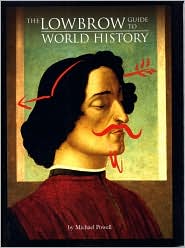
#219
Title:
This Cold Heaven: Seven Seasons in GreenlandAuthor: Gretel Ehrlich
Publisher: Vintage
Year: 2001
Country: Greenland
400 pages
She
doesn't live in Greenland, but clearly has spent considerable time
there over many years, and eaten a great deal of raw seal while crouched
in the lee of a glacier, which is good enough for me.
Ehrlich's account of her multiple trips to Greenland is a bit like hallucinatory/incantatory Annie Dillard (e.g.,
Holy the Firm) crossed with
Jon Krakauer
and dusted with cocaine. Her account is sometimes lyrical and sometimes
approaches word salad with associations that are difficult to track.
Most of the time, though, her train of thought can be tracked, if not
anticipated, and she evokes Greenland's climate so effectively that I
was shivering while I read this on Oahu.
Ehrlich has made
numerous long visits to Greenland and has become familiar with the land
and the people, forging enduring and deep relationships. She is a
motherlode of facts and brings in other travelers' narratives (and long
glosses of these in some cases, such as Rockwell Kent). As some
reviewers have noted (e.g., in discussing
A Match to the Heart),
she makes some jarring factual errors that should have been caught by
an editor. For example, she asserts, "The glacier-carved seabed was
1,000 kilometers deep" (p. 81). This is 1,000,000 meters. Since the
Marianas Trench, the lowest point on the globe, is about 11,000 meters
deep, Ehrlich probably meant "meters." Because Ehrlich is working in the
nature/travel genres as well as the ecstatic/poetic, errors of this
sort are all the more jolting.
I enjoyed Ehrlich's reports and
musings despite some repetition borne of not revising and harmonizing
segments that were first published elsewhere. She has had some
magnificent adventures. I'd have liked to know more about her
relationships and what her journeys meant to her personally. Though she
names emotions, the text comes off as quite distanced and cerebral.
At
the same time as I enjoyed the narrative, I was troubled by some of
Ehrlich's behaviors and risks that seem foolhardy. These are
foregrounded by the history of cold-weather exploration and sport, where
small preparatory omissions and lack of planning has destroyed entire
teams and expeditions. In one instance, her luggage is lost and she is
wearing inadequate clothing. It appears that she simply ignores this
rather than borrowing or buying, say, a good coat. This seems
counterphobic, negligent, impulsive, or all three. Chris McCandless, the
subject of Krakauer's
Into the Wild,
was soundly excoriated for much less. The difference is that he died
and Ehrlich has not. That's a thin line, and I do wish she'd take better
care of herself.

